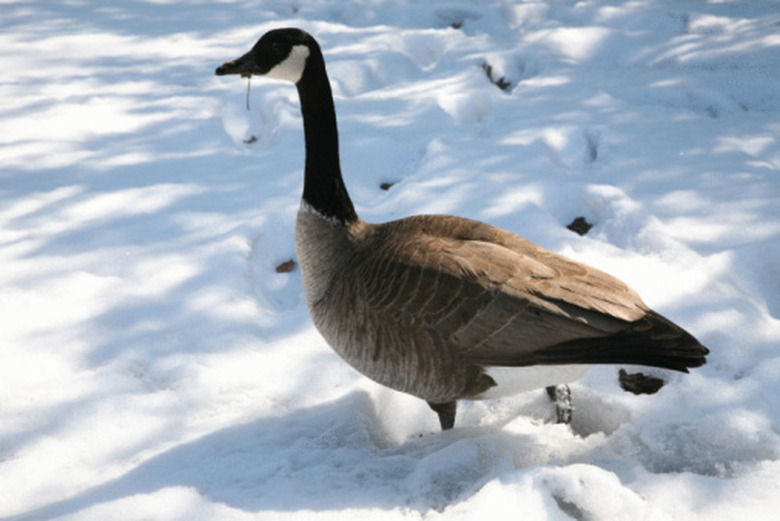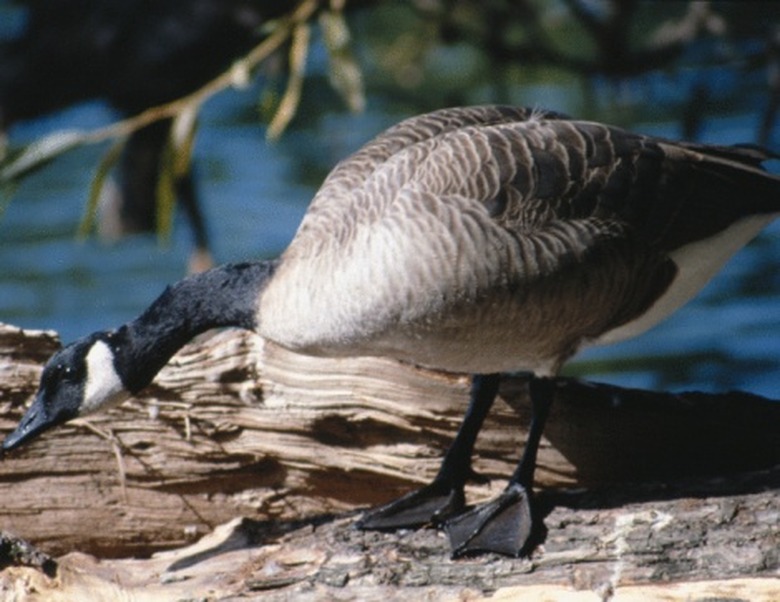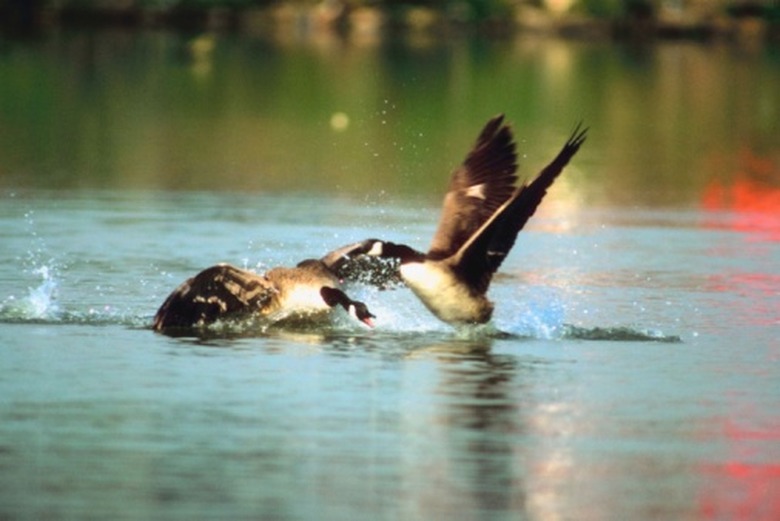What Are Signs That Geese Are Mating?
The Canada goose is one of eight species of geese. Named for Canada, which is their original breeding ground, ornithologists use the name Canada goose when referring to this bird, not "Canadian goose" as popularly believed. Canada geese are monogamous. They mate for life and begin breeding when they are two years old. They will only seek a new mate if their former mate has died or has become lost during migration.
Mating Display
Mating Display
Courtship is short and quick if the male and female take an instant liking to one another. The male begins by dipping his neck up and down in a bobbing motion as he approaches a female. As they draw near, they face each other and bob their heads in unison. If the female begins to follow the male, it means she has accepted him as a partner. If she moves away from him, or does not participate in the head bobbing, it means she has rejected him. A rejected male moves on to another female continuing his head bobbing to try again.
Male Intrusion
Male Intrusion
Males will fight over females. If a male intrudes on the courting head bobbing between a male and female, the two males will chase each other biting and beating each other with their wings. The males express their anger with loud honking. When one male gives up, the successful male approaches the female, head down and neck rolling from side to side accompanied by loud hissing and honking to display his prowess.
Continued Courtship
Continued Courtship
After a fight, as the successful male comes closer to his intended mate, he will raise his head up and back, and lift his tail erect to proclaim his success to the female. If the pair is in water, he may also rise up out of the water and slowly sink back all the while grunting loudly. If the female accepts him, she will follow his display, continuing the courtship. Other than when a fight ensues, the entire courtship is very short.
Reuniting Mated Pairs
Reuniting Mated Pairs
The display from a separated mated pair when they reunite at times is more elaborate than the initial courtship. Loud honking from both the male and female accompany these greetings. They will extend their necks towards each other, roll their heads back and forth and honk loud and long. These reuniting displays generally last longer than the initial courtship.
References
- "Canada Geese"; Pauline E. Kelly;2006
Cite This Article
MLA
David, Diana. "What Are Signs That Geese Are Mating?" sciencing.com, https://www.sciencing.com/signs-geese-mating-8133211/. 22 November 2019.
APA
David, Diana. (2019, November 22). What Are Signs That Geese Are Mating?. sciencing.com. Retrieved from https://www.sciencing.com/signs-geese-mating-8133211/
Chicago
David, Diana. What Are Signs That Geese Are Mating? last modified March 24, 2022. https://www.sciencing.com/signs-geese-mating-8133211/


